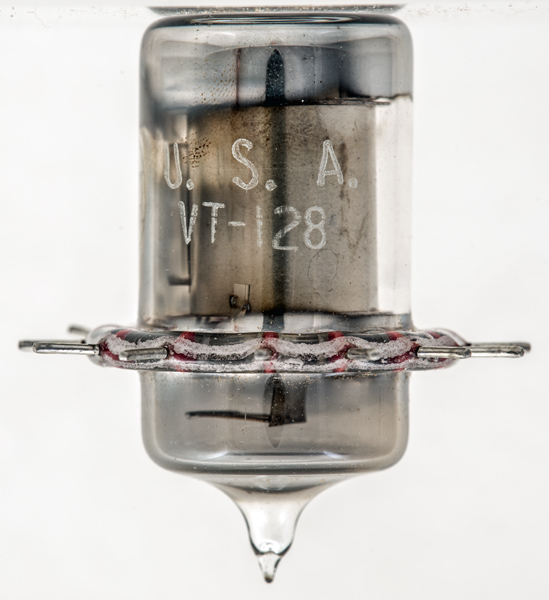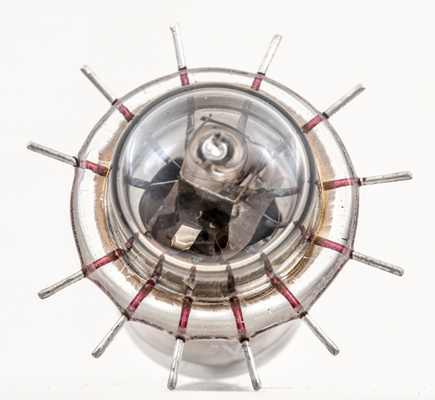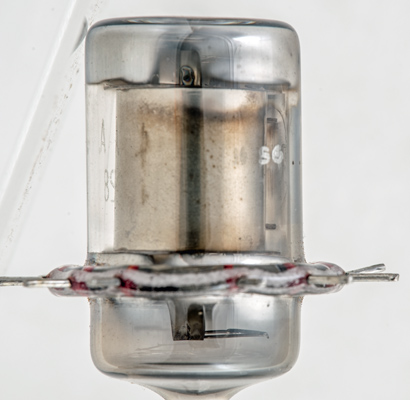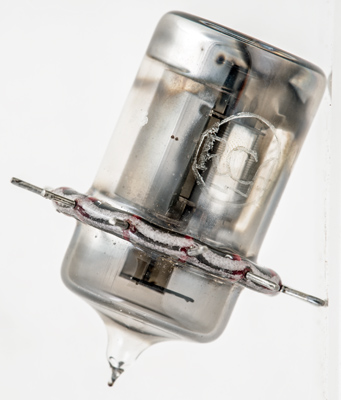|
VT-128Sensibly equivalent¶ to:1630 CV2715
|
|
|

|
The VT-128 / 1630 is an orbital-beam hexode secondary emission VHF amplifier.How it works: Electrons come off the heater, pass through the grids, and are accelerated in two curves around a round beam forming electrode. They knock into one anode, which has a special coating which emits several electrons for each one which hits it. These 'new' electrons are received by the second anode.Wikipedia: In the 1930s special amplifying tubes were developed which deliberately 'folded' the electron beam, by having it strike a dynode to be reflected into the anode. This had the effect of increasing the anode-grid distance for a given tube size, increasing the transconductance of the tube and reducing its noise figure. A typical such 'orbital beam hexode' was the RCA 1630, introduced in 1939. Because the heavy electron current in such valves damaged the dynode surface rapidly, their lifetime tended to be very short.The VT-128 orbital-beam hexode was used in early SCR-270 radar sets at 106 MHz (also used in Pearl Harbor) as an electron multiplier preamplifier. Due to noise and reliability issues and short working life of about 50 hours only, it was eventually replaced by a module using 6J4 triodes. The VT-128 or 1630 was also used in Grote Reber's pre-war radio telescopes at 480 MHz, with a 4 stage amplifier providing 100 db of gain.
The 12 pin base. A zero insertion force base would seem important to avoid breaking the glass seal.
Little detail can be seen.
The RCA logo and a glimpse of the grids within.The acorn envelope is 26 mm in diameter and, excluding the base pins, is 53 mm tall.Reference: Data-sheet & 3002. Type VT-128 was first introduced in 1939. See also 1939 adverts. |
Absolute Maximum Operating Conditions¶
| Vh | Ah | Va | 
| 6.3 | 0.3 | 370 |
|
Updated May 16, 2021.
|
|